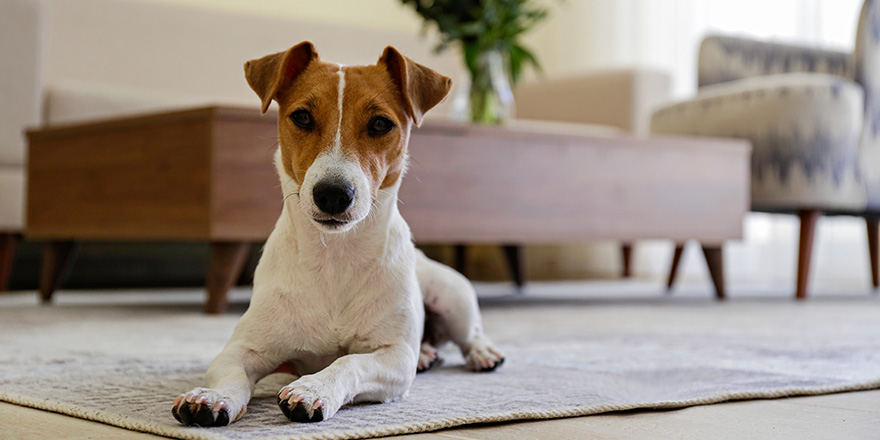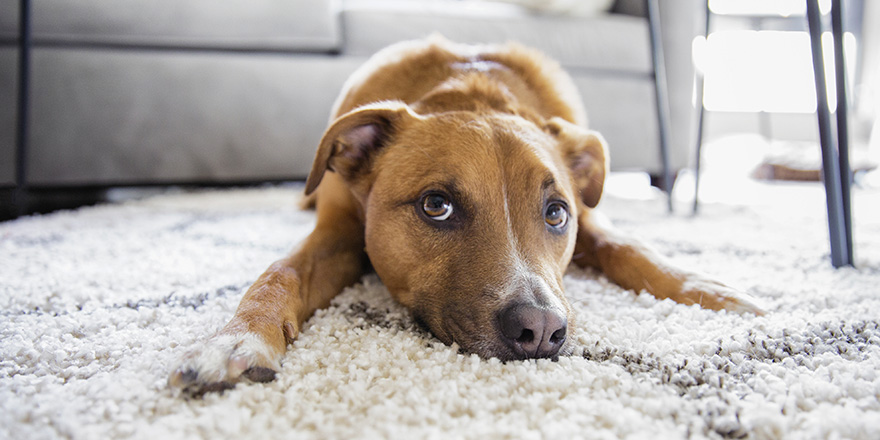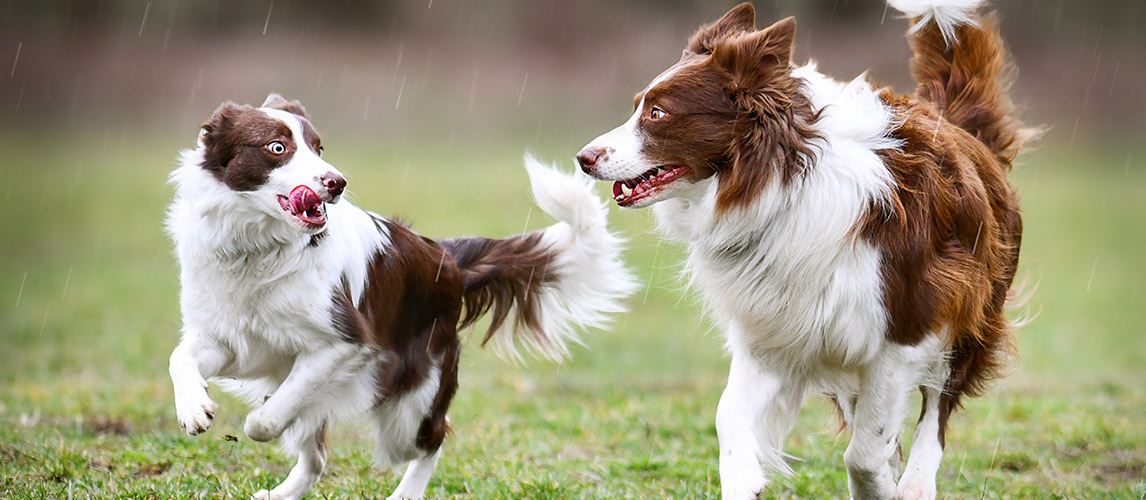Worried that your dog may develop incontinence or already have the condition? It’s not great to have your pup dripping urine over your home, but there’s often a medical reason behind their weak bladder, even if that reason is simply old age. Help your dog with their urinary incontinence by understanding what causes it and how to help.

What is Incontinence?
For dogs and humans alike, incontinence is when there is a loss of control over the bladder and/or bowels. Dogs are more likely to have urinary incontinence, meaning that they lose control over their bladders. This commonly happens when the dog is in their senior years, and female dogs are more prone to the condition than male dogs.
This is because the control that female dogs have over the neck of their bladder becomes more lax as they age, and urine can easily leak out when the muscles of the bladder aren’t strong. This is known as having weak bladder sphincter incontinence or urethral sphincter mechanism incompetence. The latter of these terms is the correct medical term for the condition, but your vet may simply describe it to you as your dog having a very weak bladder.
Though urinary incontinence is the main type of incontinence that appears in dogs, it is also possible for canines to lose control of their bowels – though this is less likely to happen unless your dog has a serious medical condition or the muscles of their bowel and backside are extremely weak.
The Causes of Urinary Incontinence in Older Dogs
For senior dogs, urinary incontinence can have several causes. It may not be that your dog’s bladder muscles are weak, it could be as simple as short-term incontinence due to illness.
Did you know that around 20% of spayed female dogs experience urethral incontinence? Spaying and neutering your dogs is crucial to avoid infections, medical issues, and unwanted puppies, but it can sometimes have unwanted results like causing incontinence in female dogs once they’re older and can’t control their bladder muscles as well anymore.
Here are some other common reasons that your dog is experiencing senior dog incontinence:
- Urinary tract infection or UTI, an infection somewhere in the bladder that can make it painful for your dog to urinate and also make it so they need to urinate more often.
- Urinary bladder stones, mineral deposits that form within the urinary tract and change the way that urine flows, causing pain and irritation.
- Kidney disease, a health condition where the kidneys are damaged, which then causes issues with urinating and other symptoms.
- Abnormal bladder positioning, where a dog’s bladder may not be positioned in the regular place and can interfere with the way their body functions and expels urine.
- Spaying, the neutering of a female dog. One in five older spayed female dogs experiences involuntary urine leakage.
- Excessive drinking, though not a medical condition, it could be the reason that your dog is having trouble managing incontinence. If they’re drinking too much, they may just not be making it to the bathroom in time.
How to Tell if Your Dog has Incontinence
There are several tell-tale signs of a weak urethral sphincter in older dogs. A quick way to figure out whether or not your pup is having trouble with their bathroom habits is to check any dog beds you have in your home. Your dog is more likely to have urinated somewhere that they consider theirs than to just pee anywhere in the house. For senior dogs’ incontinence, especially, older dogs will go somewhere they feel comfortable if they can’t make it to the bathroom.
It’s important to not scold your dog for their incontinence. They literally cannot control their bladder and they may not even realize that they’ve urinated. Sometimes the amount escaping their bladder is so small that incontinence isn’t noticed for some time.
You can also look for:
- Damp fur on your dog’s hind legs and tail.
- Urine smells in your home.
- Urine scald on your dog’s skin (urine scalding occurs when your dog’s skin is in constant contact with urine).
- An increase in your dog’s grooming habits around their rear end.
- Wet carpets or urine in the corners of your home.
Once you have evidence that points towards your dog being incontinent, it’s time to seek medical treatment at the veterinary practice your canine is registered with.
Depending on the cause of the incontinence, your dog may be on long- or short-term treatment. Urinary tract infections are easy to clear up and are treated with a few days of medication, but if the incontinence is a result of age or a side-effect from your dog being spayed, you might be looking at long-term treatment plans.

Can Incontinence be Treated?
In the majority of cases, incontinence can be successfully treated. There are medical procedures for the condition, but these aren’t the only way to treat urinary incontinence.
Your vet will start by performing a full health check for your dog and taking a urine sample to see if there are any underlying conditions that could be causing the incontinence. Urine samples are a quick way to find out if your dog simply has a UTI that they aren’t coping well with or if there’s something more sinister that is making their bladder weak.
Once your vet has the chance to rule out infections, diseases, diabetes, and other illnesses, they’ll know what the best next steps will be for you and your pup.
For dogs that are suffering from a hormonal imbalance, treatment will be different than that which is given to incontinent dogs who just have a weak bladder. Urinary incontinence in dogs can be caused by so many things, which is why there are a number of different treatment options.
How to Treat Incontinence
Some cases of incontinence can be treated through surgery, others may be made better through the use of supplements. In the case of age being the issue, it’s more likely that your vet will recommend doggie diapers over any veterinary medicine.
The age of the dog is always taken into account. There’s little reason to put a very old dog through surgical treatment if the dog’s body isn’t going to handle it. Pet parents may not want to take the risk of putting their old dog through surgery when there is medical therapy and dog diapers that can be used. Elderly dog incontinence is common, after all, and doesn’t always require surgery.
Stronger dogs that aren’t too far into their senior years may benefit from surgery, though. It’s common to have a urethral occluder implanted around the sphincter muscles or for the bladder to be tacked to a more functional position, depending on the reason your dog has incontinence.
To help your do with their incontinence at home, you could consider:
- More frequent baths to help with the skin irritation from the wet spots on their bedding and fur.
- Frequent walks to strengthen their muscles and allow them to urinate more freely.
- Use doggie diapers and place puppy pads around your home.
- Spend more time with your dog to improve their emotional state.
- See how your dogs respond to medical or hormone therapy, if appropriate.
- Consider surgical intervention through research and conversations with your vet.
Sources:
- Urinary Incontinence in the Dog, UCDavis Veterinary Medicine
- Urinary Incontinence in dogs, Washington State University







